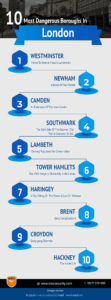Unveiling the Controversy: Champaign County Mugshots and the Power of Public Information
16 December 2023 ambikataylors@gmail.com
In the age of digital transparency, the internet has become a powerful tool for disseminating information, including details that were once confined to local police stations and courthouses. Champaign County, like many others across the United States, has seen a surge in the availability of mugshots online. This trend has sparked debates surrounding privacy, ethics, and the public’s right to know.
Table of Contents
ToggleThe Evolution of Mugshots:
Mugshots, short for “mug shot,” have been a part of law enforcement procedures since the mid-19th century. Originally, they were taken as a means of documenting criminals and aiding in the identification process. Over time, with advancements in technology, these photographs transitioned from physical files to digital databases, making them more accessible to the public.
Champaign County’s Mugshot Databases:
Champaign County, nestled in the heart of Illinois, is no stranger to the growing prevalence of online mugshot databases. These compilations of arrest photographs are now easily accessible through various websites, providing a glimpse into the faces of those who have encountered the legal system. While the intention may be to inform the public, the consequences have sparked significant controversy.
The Public’s Right to Know:
Proponents of online mugshot databases argue that they serve the public interest by providing information about arrests and promoting transparency within the criminal justice system. Supporters claim that access to this information empowers citizens to stay informed about their community and holds law enforcement accountable.
Moreover, advocates argue that the public has a right to know who has been arrested, as this information can impact the safety and well-being of the community. By making mugshots readily available, individuals can be aware of potential threats and take necessary precautions.
Privacy Concerns and Unintended Consequences:
Despite the arguments in favor of public access to mugshots, concerns about privacy and the potential for misuse persist. Opponents argue that the indiscriminate publication of arrest photos can harm individuals’ reputations, even if they are later proven innocent. This practice can lead to a form of public shaming and, in some cases, create lasting damage to a person’s personal and professional life.
Furthermore, the release of mugshots before a conviction raises ethical questions about the presumption of innocence. Individuals who are arrested but not ultimately charged or found guilty may still suffer from the negative consequences of having their mugshots circulating online.
The Impact on Rehabilitation:
Another aspect of the controversy surrounding online mugshot databases is the impact on individuals’ rehabilitation efforts. Once an arrest photo is made public, it can haunt individuals long after they have served their time or completed rehabilitation programs. The stigma associated with a mugshot can hinder reintegration into society and make it challenging for individuals to secure employment or housing.
Legal and Legislative Responses:
In response to the ethical dilemmas surrounding the publication of mugshots, some states and jurisdictions have implemented legislation to regulate their release. Champaign County, like others, may find itself grappling with the need to balance the public’s right to information and the protection of individual privacy.
One approach to address these concerns is to restrict the release of mugshots until after a conviction. This ensures that only individuals proven guilty have their photos made public, reducing the potential harm to those who are innocent or whose charges are later dropped.
Alternatives to Publicizing Mugshots:
As debates over the ethical implications of publishing mugshots continue, some advocate for alternative ways to address the public’s right to information without compromising individual privacy. One suggestion is to provide access to arrest records without accompanying photographs, allowing the public to stay informed while minimizing the potential harm associated with the release of mugshots.
Conclusion:
The controversy surrounding Champaign County mugshots is a microcosm of the larger debate over the intersection of technology, privacy, and the public’s right to know. While the availability of such information can be a powerful tool for accountability and community safety, it also raises important questions about the unintended consequences for individuals caught up in the legal system. As society grapples with these issues, finding a balanced approach that respects both the public’s right to information and the privacy of individuals is crucial to fostering a fair and just criminal justice system.
. What are Champaign County mugshots? Champaign County mugshots are photographs taken by law enforcement agencies during the booking process when an individual is arrested. These images, along with arrest details, are often made available to the public through online databases.
2. How can I find Champaign County mugshots online? Champaign County mugshots can be found on various websites that compile and publish arrest records. These websites are accessible to the public, providing an overview of individuals who have been arrested in the county.
3. Why are mugshots made public? Mugshots are made public as a means of promoting transparency within the criminal justice system. The intention is to keep the community informed about arrests, enhancing public safety, and holding law enforcement accountable.
4. Are Champaign County mugshots considered public records? Yes, mugshots are generally considered public records. However, the degree of access and the specific information available may vary depending on state laws and regulations.
5. Can mugshots be removed from online databases? The process of removing mugshots from online databases can vary. Some websites may allow individuals to request removal, especially if charges have been dropped or if the person has been acquitted. However, it’s essential to check the policies of each specific website.
6. What are the privacy concerns associated with Champaign County mugshots? Privacy concerns arise from the potential misuse of mugshots. Individuals, even those later found innocent, may face negative consequences, such as damage to their reputation, difficulty finding employment, or challenges in securing housing.
7. Are mugshots released before a person is convicted? Yes, mugshots are often released before a person is convicted. This practice has led to ethical debates, as it can contribute to the presumption of guilt and adversely affect individuals who are later proven innocent.
8. How do mugshots impact rehabilitation efforts? Mugshots can have a lasting impact on individuals’ rehabilitation efforts by creating stigma that hinders their reintegration into society. The public availability of these images may affect employment opportunities and personal relationships.
9. Is there legislation regulating the release of mugshots in Champaign County? Legislation regarding the release of mugshots varies by jurisdiction. Some states and counties have implemented laws to restrict the publication of mugshots until after a conviction, aiming to balance the public’s right to information with individual privacy.
10. Can I access Champaign County mugshots without the accompanying photographs? Some advocates propose providing access to arrest records without including photographs, offering a compromise to keep the public informed while minimizing potential harm associated with the release of mugshots.
These FAQs aim to provide general information about Champaign County mugshots, their accessibility, and the ethical considerations surrounding their public release. Individuals seeking specific details or assistance with mugshot removal should refer to the policies of the relevant websites and legal resources in the jurisdiction.







